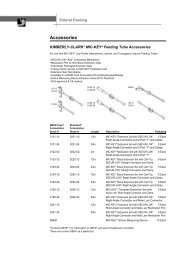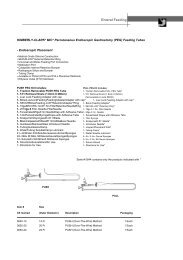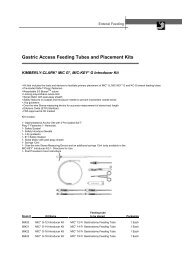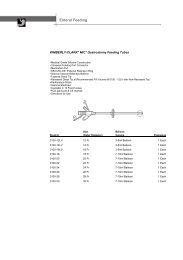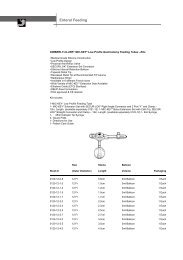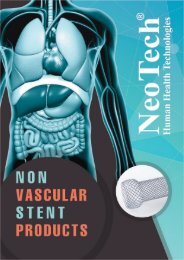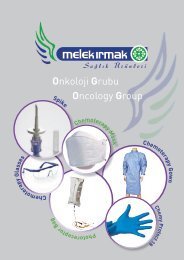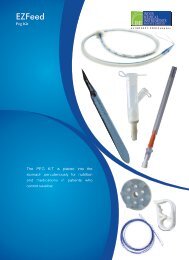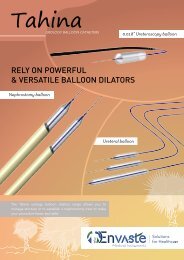Report On Long final version 22.4.10
You also want an ePaper? Increase the reach of your titles
YUMPU automatically turns print PDFs into web optimized ePapers that Google loves.
Implantation of port systems<br />
Implantation of the port system via the<br />
right subclavian vein would prove to be<br />
technically difficult due to prior placement<br />
of a cardiac pacemaker. Moreover the left<br />
jugular vein was chronically occluded. The<br />
catheter lines were passed easily via the<br />
right internal jugular vein (fig. 3, 4, 5).<br />
After implantation hemodialysis could<br />
proceed and continue without problems<br />
(fig. 6).<br />
Fig. 3: Surgical field of right internal jugular vein<br />
Fig. 6: Depiction of an implanted port system<br />
Fig. 4: Operative field port system<br />
After disinfection and sterile draping of the<br />
puncture sites each port chamber is<br />
accessed with the special port needles. The<br />
dialysis nurse wears sterile gloves and a<br />
mask. The portal lock solution is aspirated.<br />
The system is then flushed with<br />
physiologic saline. Upon termination of<br />
dialysis 46% citrate solution is once again<br />
injected. 3-point rotation of the membrane<br />
is recommended to ensure even<br />
distribution of puncture points to prevent<br />
excessive wear of the membrane material.<br />
Fig. 5: Post-op x-ray of port system<br />
Conducting hemodialysis via port<br />
system



